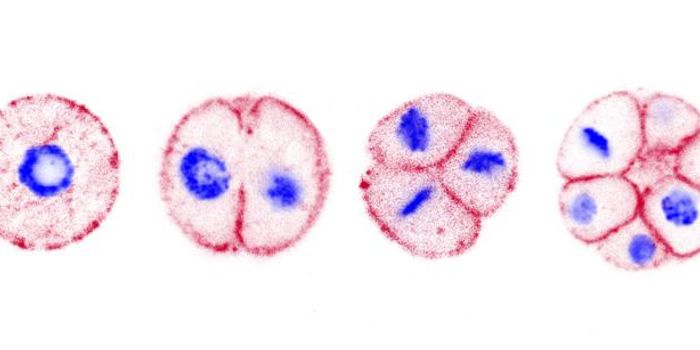Visualizing & Identifying Active mRNA in the Cell
The characteristics of a cell and an organism are largely due to (natural influences and) the genes that they express. When genes are active, they are transcribed by cellular machinery from DNA into messenger RNA. Using a relatively new technique called tissue expansion, researchers have now created a way to label single messenger RNA (mRNA) molecules in tissues. Those molecules can then be sequenced, to illuminate which genes are active and where in a cell at any given time. This information can tell scientists more about gene expression and the various factors that impact it, and how gene activity creates a cell's and tissue's identity. The findings have been reported in Science.
"Gene expression is one of the most fundamental processes in all of biology, and it plays roles in all biological processes, both healthy and disease-related. However, you need to know more than just whether a gene is on or off," explained co-senior study author Ed Boyden, a professor of neurotechnology, and biological engineering, media arts and sciences, and brain and cognitive sciences at MIT. "You want to know where the gene products are located. You care what cell types they're in, which individual cells they play roles in, and even which parts of cells they work in."
Boyden's group began creating tissue expansion techniques in 2015 by embedding absorbent polymers into a tissue sample, then swelling those tissues with water. Tiny bits of tissue full of intricate structures can be made 100 times bigger while maintaining the original organization. High-resolution images can be obtained in this way.
In the lab of co-senior study author George Church, a professor of genetics at Harvard Medical School, RNA sequencing tools were created in 2014 that enable scientists to label and sequence thousands of mRNA molecules in a dish.
This work brought the Boyden and Church labs together to show that tissues from mice and human tumor samples can be expanded, and messenger RNA molecules within that tissue can be targeted and sequenced. Their approach is called expansion sequencing (ExSeq). By expanding the tissue prior to sequencing it, researchers can get a high-resolution look at RNA, and sequencing it is easier. Scientists can see exactly where in cells the mRNA is located, down to the compartment, like the dendrites of neurons.
"We know that the location of RNA in these small regions is important for learning and memory, but until now, we didn't have any way to measure these locations because they are very small, on the order of nanometers," said co-lead study author Shahar Alon, a former MIT postdoc who is now a senior lecturer at Bar-Ilan University.
This technique can be applied in an 'untargeted' way, which highlights thousands of mRNA molecules, about 20 to 50 percent of which can be sequenced. It can also be used to target specific sets of RNA.
The researchers were able to use ExSeq to see mRNAs encoding for transcription factors in the dendrites of mouse hippocampal neurons, and could classify neurons from the mouse visual cortex into subtypes based on gene expression.
There are many applications for this tool, such as studying tumor cells in their microenvironment, which was also done in this study. The work showed that cells can act differently depending on where they're located within a tumor.
Sources: AAAS/Eurekalert! via Massachusetts Institute of Technology (MIT), Science









